The religion and philosophy of Taoism (or Daoism) trusts in the power of spontaneous decisions that arise from a calm and selfless mind. With various meditative exercises and a virtuous way of life, the followers of Taoism try to bring their life energy Qi into harmony with the Tao, the primordial ground of all being.
Taoism is one of the three great Chinese teachings, along with Confucianism and Buddhism. Its philosophy is deeply anchored in the traditional Chinese way of thinking, which is often difficult to comprehend for Western-influenced people. Familiarising yourself with Taoism and following the Taoist path is a lifelong task. However, this knowledge article will give you a very first insight into the traditional Chinese philosophy of life. After all, Taoism has not only significantly influenced Zen Buddhism, Taoist exercises such as Qigong are also very popular in China today.
The origins of Taoism
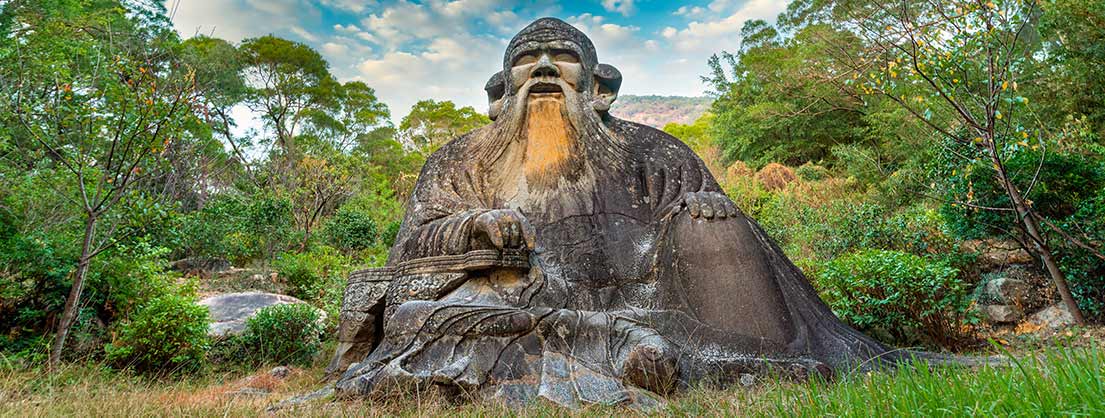
The roots of Taoism go back many thousands of years. It is closely connected with the traditional Chinese way of life and thus various schools of thought of ancient China are gathered in its teachings. For all that, however, it was never a religion of the general population, because it is too unsuited to everyday life for that. It is impossible to determine exactly when and where Taoism originated. There is no founder of a religion like Jesus or Siddharta Gautama, the later Buddha, to whom this religion could be traced.
Instead, the Taoist teachings were initially passed on orally by masters to their students over many millennia. The first written records of the teachings of Taoism can be found in the writings of Lao Tzu, also known as Laozi, from the 6th century B.C. Among experts, however, it is highly disputed whether Lao Tzu really existed. It is likely that his alleged traditions are a collection of ancient folk wisdom that was commented on by later authors. [1]
Confucianism and Taoism

In Chinese society, there are two original spiritual currents that complement each other: Confucianism and Taoism. Confucianism provides guidance for practical life in the community. In its spirit, children are familiarised with norms, rules and values and thus educated to become a functioning part of society.
In contrast, Taoism is traditionally more a school of older men or dropouts who consciously withdraw from society. They want to free themselves from all the constraints of living together. For only when they free themselves from the corset of society’s rules and regulations can they find spiritual peace. They need this to regain their natural spontaneity and live in harmony with the Tao.[2]
What is the Tao?

Did God “make” the world?
In order to understand the Tao, we must first consider our own view of the world. We have internalised the idea of the Christian Hebrew God, that is, an omniscient being who is well aware of his role in the world and of his own existence. God created the world with all its physical conditions and in the process also established moral laws. He forms man in his own image. One could say that God “makes” the world. He puts the cosmos together out of many individual small building blocks.
In our world of thought, we also separate these individual components from each other. Not only our concept of God, but also the western scientific way of thinking has a great influence on this. That is why we distinguish living from lifeless matter. We mentally divide our body into arms, legs, head, eyes and brain. And we distinguish between body, mind and soul. [3]
In Tao, the world grows out of itself
A Taoist would probably laugh at the question of how the world is “made”. Why should the world be composed of individual parts? A plant is not made up of flowers, leaves and stems. It grows out of itself. Probably without being able to understand how and why it actually grows. But nevertheless, its growth is not random. One could speak of a kind of directed spontaneity.
It is the same with the Tao. The Tao is the indefinable process of the world, the primordial ground that encompasses everything that is alive, spiritual but also material. Like a plant, the Tao grows out of itself without being aware of how it brings forth the universe. It is shrouded in mysterious darkness (Hsüan). This darkness is not a classical darkness in the sense of black as the opposite of white. Hsüan symbolises the sheer incomprehensibility of the Tao to our mind. We can experience it, for example, when we try to remember the time before our birth. [4]
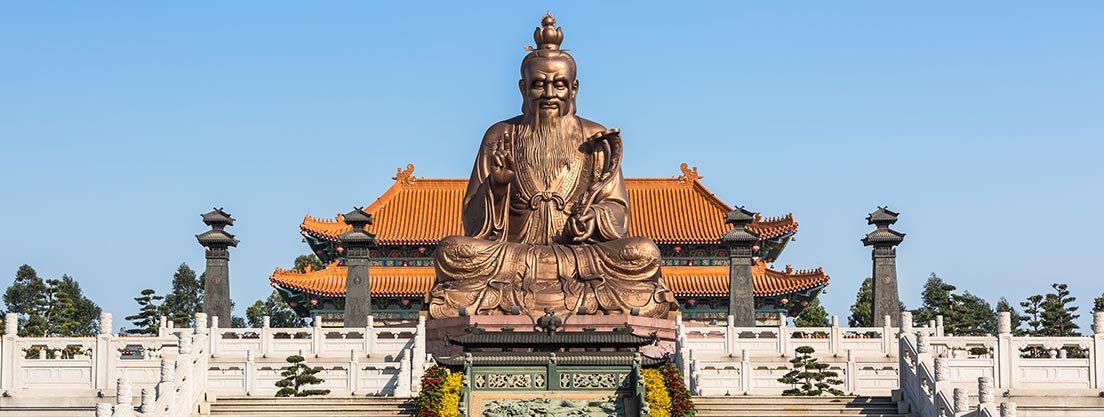
How does Lao-tzu describe the Tao?
Lao-tzu, to whom the first writings of Taoism are attributed, is said to have described the Tao in the following words:
Before heaven and earth came into being, there was something indeterminate. How calm! How empty! It stands alone and unchanging; the Tao works everywhere and tirelessly. It can be considered the mother of everything under heaven. I do not know its name, but I call it by the word Tao.
The Tao is something blurred and indeterminate. (…) And yet there are images in it. How hazy! How indistinct! And yet there are things in it. How dim! How confused! And yet there is spiritual power in it. Because this power is truest, there is trust in it.[5]
Spontaneity as a principle of life

The Tao works according to the principle of spontaneity
In his reflections on the Tao, Lao-tzu comes to the following conclusion:
The principle of the Tao is spontaneity.[6]
But the spontaneity of the Tao must in no way be regarded as a blind or disorderly drive. We must imagine an intelligence that follows no plan or order. The Tao functions thoughtlessly, but not randomly. The followers of Taoism try to transfer the principle of spontaneity to their own life world. [7]
Usually we avoid spontaneity
In our western society, spontaneous decisions are frowned upon. We try to plan all our actions and include all eventualities in our considerations. We give even small decisions a great deal of thought. Like a scientist, we meticulously gather all available information. This is a very cumbersome way of thinking and acting in our everyday lives, depending on the situation. And to make matters worse, despite careful planning, quite a lot still goes wrong.
The Taoist lives spontaneity
The Taoist lives the spontaneity of the Tao in his own life. When making a decision, he would ask how we know that we have gathered all the relevant information on a problem? No matter how much thought we put into it, in the end a large portion of gut feeling plays a role in every everyday decision. The Taoist therefore tries to let decisions and actions flow from himself. He trusts that the right attitude of mind will spontaneously lead to the best decisions and actions. [8]
The Qi (Chi) in Taoism
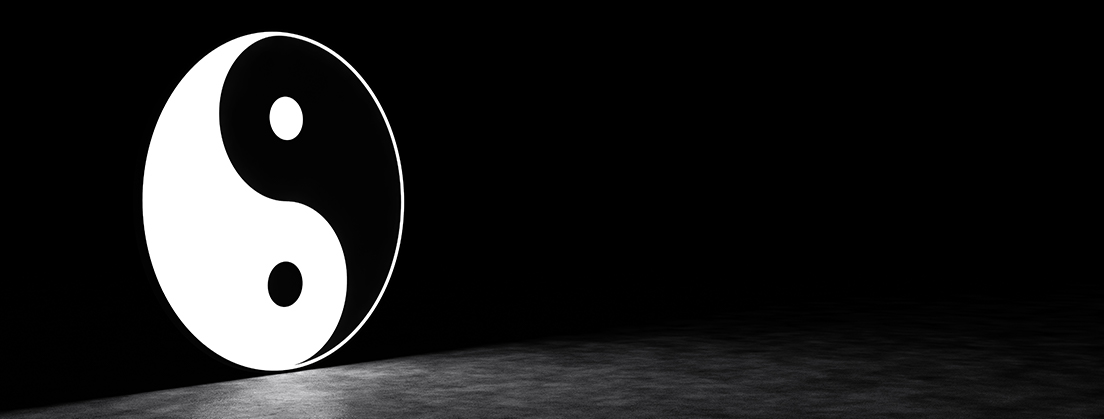
While the Tao is the primordial ground of all being, qi could be described as the primordial energy. In Taoist teachings, the primal energy divides into the two poles yin and yang. We find this polarisation, for example, in the two sexes. A special focus of Taoism is on the two opposing poles of “force” and “spirit”. Most Taoist meditation exercises aim to reunite power and mind and thus bring them into harmony with the Tao. [9]
The meditative path of the Tao
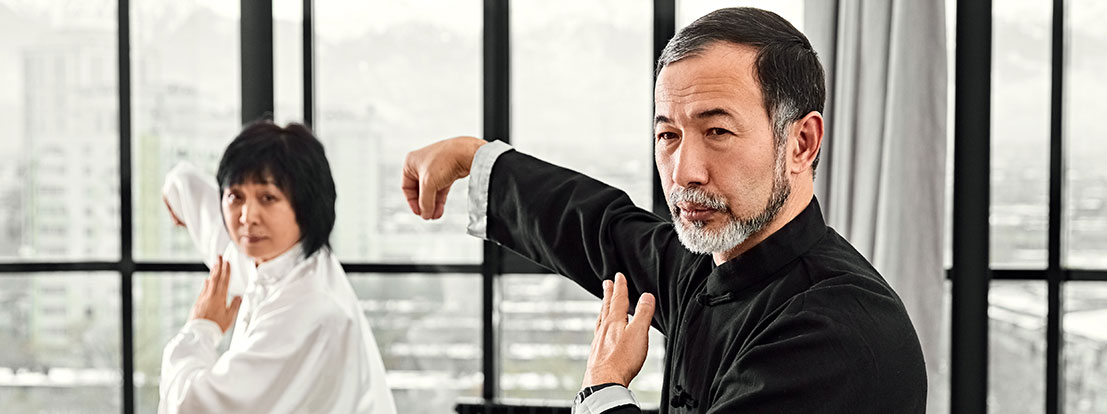
Primal and conscious mind
In the Taoist tradition Secret of the Golden Flower of Master Lü Zu, he shows a meditative way to unite mind and power. Lü Zu distinguishes between two forms of mind. The original spirit exists beyond time and space. The conscious mind, on the other hand, is involved in the cycle of life and thus also in arising and passing away. Earthly sensations such as lust, anger and greed are attached to the conscious mind. This is to be transformed back into the original spirit of the Tao through the Qigong exercises.
Four stages for the transformation of the spirit
The path of the Golden Flower consists of four stages of meditation. They are called “Gathering of the Light”, “Emergence of the New Birth in the Space of Power”, “Detachment of the Spiritual Body into Independent Existence” and “Centre in the Midst of Conditions”. The aim of the four stages is to bring the spirit to rest. To achieve this goal, the Taoist must detach himself from all his own needs and desires. “The heart must die, the mind must live.” ( Quote Wilhelm 1998, page 90) [10]
Imbued with the energy of the original spirit
Through meditative concentration on the point between the eyebrows, the Taoist collects energy. He only succeeds in this if he maintains a relaxed state of mind during concentration. The collected energy creates a circuit of light in the body. This light is the energy of the original mind. Exertion, excitement, distraction and sleepiness prevent the success of meditation. [11]
I Ching – The Book of Changes
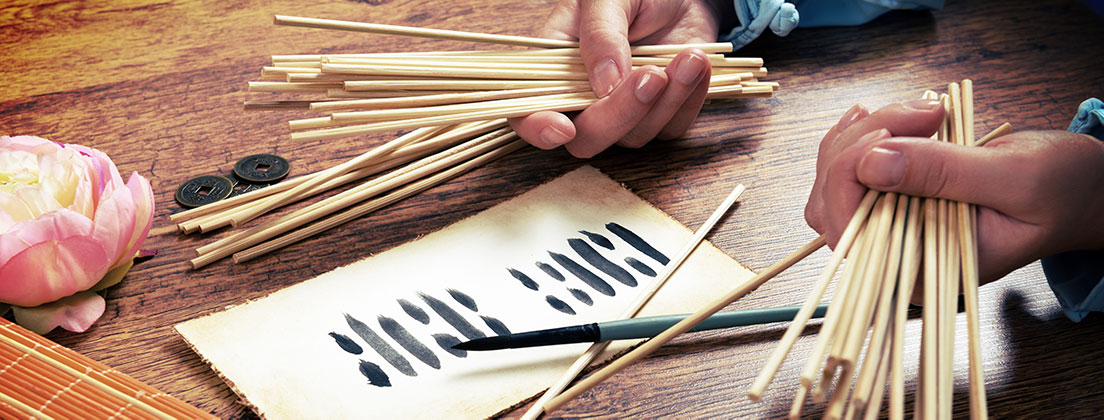
The oldest tool on the path of Taoism is the I Ching or Yijing, the Book of Changes. It originated about 3000 years before Christ and contains 64 geometric figures that can be used for divination. However, the I Ching also offers philosophical guidance. Originally, the diviner looked for the figures of the I Ching in the cracks of a heated turtle shell. Later, the stems of the yarrow were used.
The I Ching helps to achieve spontaneity
The follower of Taoism sees the divinations of the I Ching as a useful tool in his mission to attain a natural spontaneity. Before consulting the oracle, he brings his mind into a state of calm through rituals. He knows that the I Ching does not allow exact predictions. Rather, it helps intuition to discover the right figures. A knowledgeable user of the I Ching needs neither turtle shell nor yarrow stalks. He sees the figures everywhere along his path. In the cloud formations in the sky, in carelessly left tools and in the grain swaying in the wind in the field.
Can this phenomenon be explained psychologically?
A psychologist would perhaps explain the phenomenon of the I Ching from today’s perspective as follows: If a patient feels and thinks in a certain way, matching figures from his environment particularly catch his eye. He projects his thoughts and feelings onto his environment, even if he himself is not aware of it. His gut feeling is found in the figures of the I Ching that he recognises in his environment and he acts accordingly.[12]
Let the mind be at rest
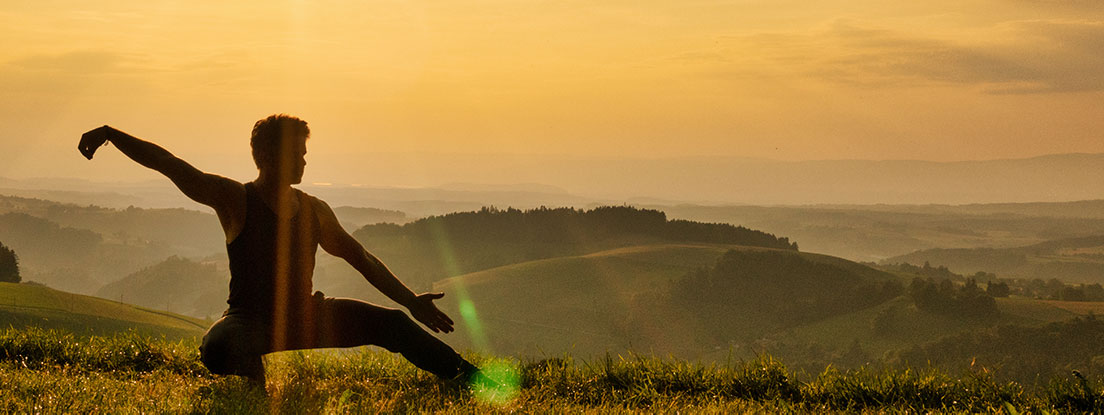
As long as our mind is frantically trying to grasp and explain the world, we have no access to the Tao. We have to learn to let go of our thoughts and feelings. This state could be equated with a certain simple-mindedness. The goal of Taoism is to have a natural trust in one’s own abilities and the course of events. If you try to control yourself completely, you will fail. The mind should not slide into a moronic void, but use its inherent spontaneous intelligence without forcing it. [13]
The Chinese parable of the centipede shows why Taoism trusts in the principle of spontaneity:
The centipede was happy and content until a grey-brown toad asked him, “Please tell me which of your legs goes after which?” This occupied his mind so much that the centipede laid in a ditch, confused, wondering how to walk. [14]
Mastery in art and craft
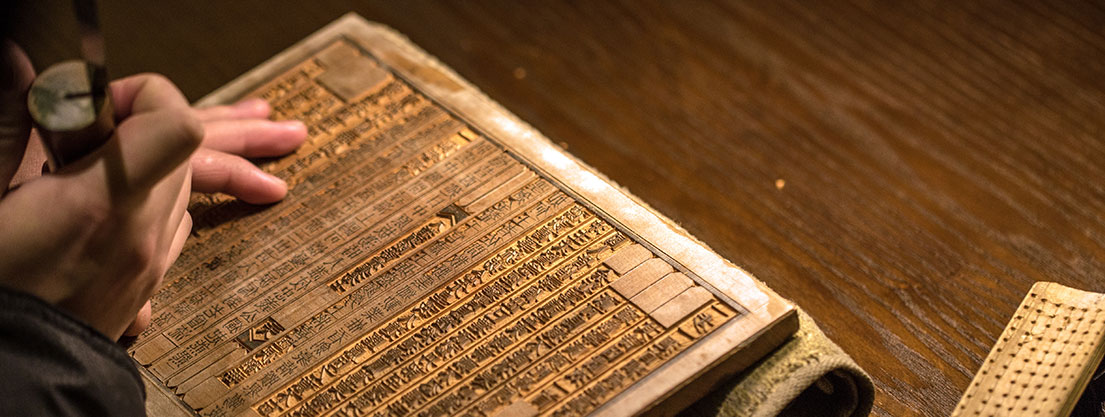
All cultures of the Far East value the creative power of spontaneity. It is also considered a basic principle of mastery in arts and crafts. While it is recognised that complicated techniques are often used in all arts. However, these are secondary. Truly masterful work flows from the spontaneity of the artist or craftsman. A master in a subject, then, is a person who creates wonderful coincidences without intention. [15]
What can we learn from Taoism?
Becoming a Taoist is a lifelong journey. Nevertheless, we can apply some things of Taoist philosophy to our own lives. For example, we should not worry endlessly about every little thing, but simply let things come to us. Because there can never be any real planning certainty anyway. The Taoist art of making decisions from a calm state of mind can also be helpful in every life.
If you want to learn more about different schools and philosophies of meditation, you will find an overview in the first part of The History of Meditation.
Sources
[1] Harald Piron: Meditationstiefe. Grundlagen, Forschung, Training, Psychotherapie, 2020, Seite 36.
[2] Alan Watts: The Way of Zen, 1957, Seite 10.
[3] Alan Watts: The Way of Zen, 1957, Seite 11.
[4] Alan Watts: The Way of Zen, 1957, Seite 26.
[5] Zitate: Frei übersetzt aus Alan Watts: The Way of Zen, 1957, Seite 16.
[6] Zitat: Frei übersetzt aus Alan Watts: The Way of Zen, 1957, Seite 17.
[7] Alan Watts: The Way of Zen, 1957, Seite 17.
[8] Alan Watts: The Way of Zen, 1957, Seite 14f.
[9] Harald Piron: Meditationstiefe. Grundlagen, Forschung, Training, Psychotherapie, 2020, Seite 37.
[10] Harald Piron: Meditationstiefe. Grundlagen, Forschung, Training, Psychotherapie, 2020, Seite 37.
[11] Harald Piron: Meditationstiefe. Grundlagen, Forschung, Training, Psychotherapie, 2020, Seite 51.
[12] Alan Watts: The Way of Zen, 1957, Seite 13.
[13] Alan Watts: The Way of Zen, 1957, Seite 21.
[14] Zitat: Frei übersetzt aus Alan Watts: The Way of Zen, 1957, Seite 27.
[15] Alan Watts: The Way of Zen, 1957, Seite 26.




